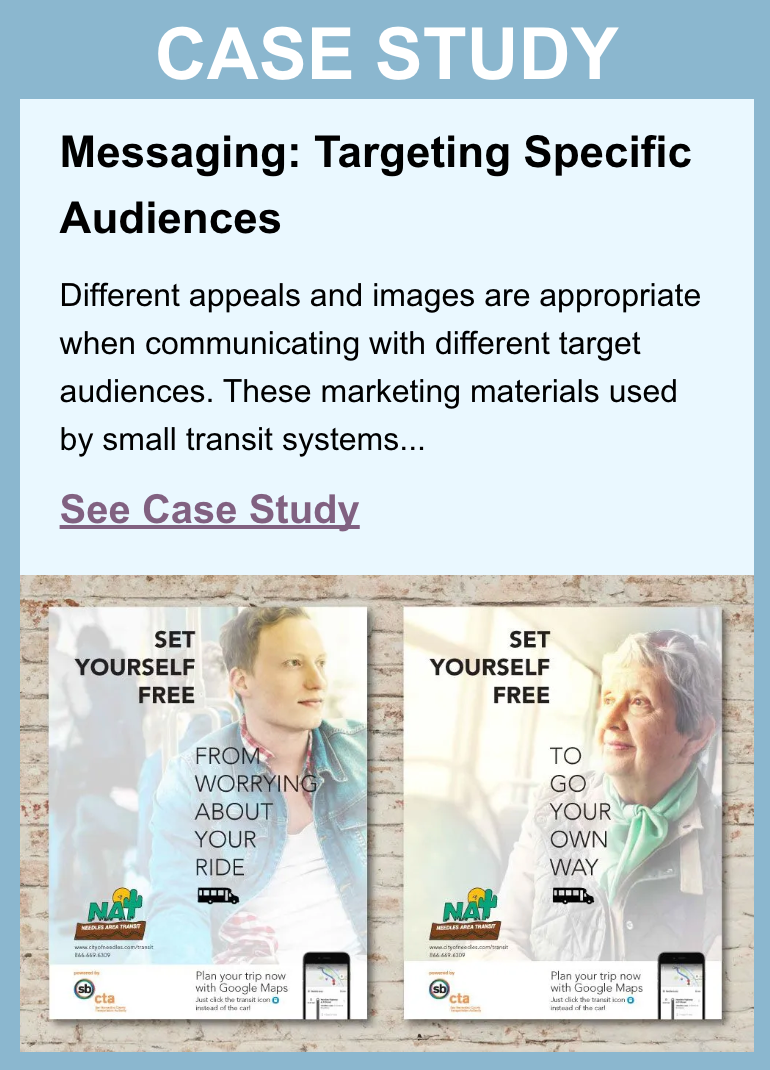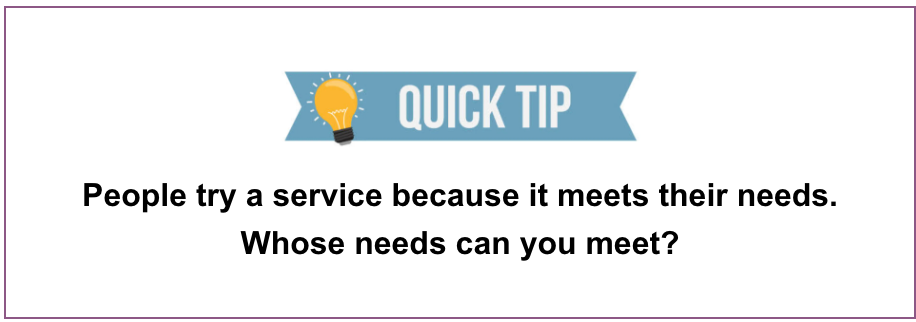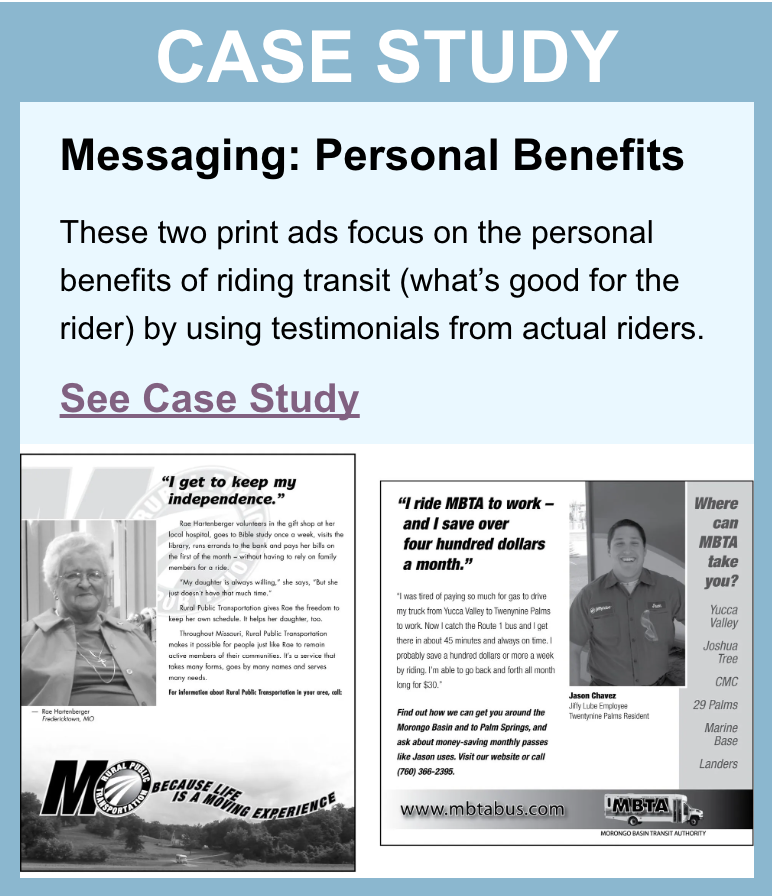Marketing in the Transit Environment
Transit must fill a need in order for people to use it. That means strategic transit marketing requires that you understand the needs and wants of your current and potential riders and the benefits your service delivers. Identifying the target groups who have needs your transit service can meet allows you to tailor your marketing messages to audiences with realistic ridership potential.
The needs people have for transit fall into three categories:
- Ongoing
- Temporary
- Discretionary
Ongoing—Riders and potential riders with an ongoing need for public transit service make up a system’s core ridership. This audience includes students, low-income individuals and families, low-wage workers, older adults, and persons with disabilities. Some of these groups have limited transportation options, while others ride to avoid the cost of driving or owning a vehicle.
Temporary—Those with a temporary need might be tourists and other visitors; people who normally drive, but their car is out-of-service; those unable to drive due to an injury or suspended license; or people who want to avoid traffic or parking hassles at their destination.
Discretionary—People with a discretionary need include commuters who find using transit more convenient and economical than driving to work; people who use transit to save money or avoid the need for a second family vehicle; and those who ride to benefit the environment.
Identifying Your Target Markets
Non-Riders—Well-run public transit enhances a community’s image and benefits many individuals and organizations that do not use transit:
- Employers benefit from having a mobile workforce;
- Schools and colleges may count on transit to get students to class;
- Healthcare providers experience fewer missed appointments when patients have transit access;
- Retailers profit from increased traffic when customers can get to their stores;
- And quality of life for all is improved when traffic congestion and air pollution are reduced.
These people and institutions have a stake in your system. Marketing to them will help you build ridership and maintain public support.
Among the non-rider population are many individuals and organizations that serve as “gatekeepers” for target groups that are likely transit users. These gatekeepers include employers, educational institutions, social services, and other organizations that can provide access to potential transit-user groups, and therefore serve as marketing partners for your transit system. These gatekeepers make up a target market that is key to your research and communication efforts.
Those who make decisions about transit funding make up another important group to consider in your marketing efforts. Elected officials, board members, and staff at local jurisdictions must be made aware of your system’s presence and impact on the community. This goes for voters and the general public, as well: marketing to these non-rider groups can help shift public opinion in your favor, resulting in long-term community support.
National RTAP maintains an up-to-date
resource of transit statistics that showcase the community benefits of public transit, which can be added to your presentations and marketing materials for these groups.
Crafting the Message
To create messaging that raises awareness and increases ridership, you first have to understand why people don’t ride as well as what the benefits of riding and of having an active transit service mean to your community.
Barriers to Ridership
There are three categories of reasons that people who have other transportation options decide not to use transit:
- They don’t know how to use the system (the knowledge gap).
- They think people like them don’t ride the system (the perception gap).
- The system doesn’t meet their needs (the service gap).
While no amount of marketing can sell a service that doesn’t meet the potential user’s needs, marketing has remedies for the first two barriers.
The Knowledge Gap
People who don’t ride your system may not know it exists or how to use it. Well-designed passenger information helps educate this audience on transit basics like where your system goes, how much it costs to use it, and how to transfer. All materials, including capital assets like vehicles and bus stop signs, should make it easy for people to learn more about how to ride your system by promoting your website and providing a customer service phone number.
The Perception Gap
Some potential riders may think your system only serves older adults or persons with disabilities. Marketing materials that show many types of riders benefiting from your system can help change this perception.





